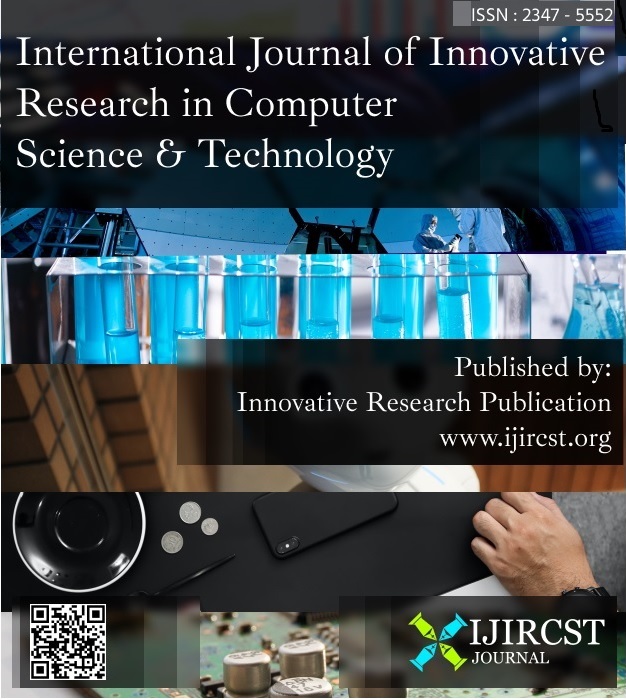An Analysis of Several Aspects of Fuel Cell
Keywords:
Cell, Current, Fuel, HydrogenAbstract
Approximately 450 million individuals worldwide suffer from mental and behavioural problems. During their lifespan, one out of every four people will acquire one or more of these diseases. Neuropsychiatric illnesses account for 13 percent of total Disability Adjusted Life Years (DALYs) lost globally due to all diseases and accidents, with that figure anticipated to climb to 15 percent by 2020. Psychiatric diseases account for five of the top 10 causes of disability and death worldwide. Mental disorders not only impose a huge psychological, social, and economic burden on society, but they also elevate the risk of physical ailments. Given the existing constraints in the effectiveness of treatment options for decreasing disability caused by mental and behavioural disorders, prevention is the only long-term strategy for minimizing the burden imposed by these diseases. The relevance of risk and protective factors in the development of mental disorders and poor mental health has been explored by social, biological, and neurological sciences. From prenatal life onwards, biological, psychological, as well as societal risk and protective factors, as well as their interactions, have been uncovered. Because many of these variables are changeable, they may be used as targets for preventive and promotion efforts. This article covers a variety of mental health topics.
Downloads
References
R. Sharma et al., “Analysis of Water Pollution Using Different Physicochemical Parameters: A Study of Yamuna River,” Front. Environ. Sci., 2020, doi: 10.3389/fenvs.2020.581591.
N. T. T. Van et al., “The role of human–machine interactive devices for post-COVID-19 innovative sustainable tourism in Ho Chi Minh City, Vietnam,” Sustain., 2020, doi: 10.3390/su12229523.
C. Santoro, C. Arbizzani, B. Erable, and I. Ieropoulos, “Microbial fuel cells: From fundamentals to applications. A review,” J. Power Sources, 2017, doi: 10.1016/j.jpowsour.2017.03.109.
V. Jain, M. Goyal, and M. S. Pahwa, “Modeling the relationship of consumer engagement and brand trust on social media purchase intention-a confirmatory factor experimental technique,” Int. J. Eng. Adv. Technol., 2019, doi: 10.35940/ijeat.F1163.0986S319.
Meenu, S. Andeep Kumar, V. K. Panchal, and R. Kumar, “Evolution of new integrated haze removal algorithm based on haze line,” Int. J. Eng. Adv. Technol., 2019, doi: 10.35940/ijeat.E7084.088619.
K. K. Gola, M. Dhingra, and R. Rathore, “Modified version of playfair technique to enhance the security of plaintext and key using rectangular and substitution matrix,” Int. J. Eng. Adv. Technol., 2019.
T. Agrawal, A. K. Agrawal, and S. K. Singh, “An efficient key-accumulation cryptosystem for cloud,” Int. J. Eng. Adv. Technol., 2019.
P. Choudhary, R. K. Dwivedi, and Umang, “A novel framework for prioritizing emergency vehicles through queueing theory,” Int. J. Eng. Adv. Technol., 2019.
J. Wang, H. Wang, and Y. Fan, “Techno-Economic Challenges of Fuel Cell Commercialization,” Engineering. 2018, doi: 10.1016/j.eng.2018.05.007.
D. R. Dekel, “Review of cell performance in anion exchange membrane fuel cells,” J. Power Sources, 2018, doi: 10.1016/j.jpowsour.2017.07.117.
A. M. Abdalla et al., “Nanomaterials for solid oxide fuel cells: A review,” Renewable and Sustainable Energy Reviews. 2018, doi: 10.1016/j.rser.2017.09.046.
T. Kadyk, C. Winnefeld, R. Hanke-Rauschenbach, and U. Krewer, “Analysis and Design of Fuel Cell Systems for Aviation,” Energies, 2018, doi: 10.3390/en11020375.
P. Gupta and A. Kumar, “Fluoride levels of bottled and tap water sources in Agra City, India,” Fluoride, 2012.
M. K. Khan, A. Haroon, S. A. Hanif, and M. Husain, “A study of pattern of fatal head injury at J.N.M.C. hospital, Aligarh,” Indian J. Forensic Med. Toxicol., 2012.
N. Garg, A. K. Jain, A. Ansari, A. Sharma, J. Singh, and T. Chugh, “Dimorphism of maxillary and mandibular canine teeth in establishing sex identity,” Indian J. Forensic Med. Toxicol., 2012.
Y. Kaeswaren, “The Use of Mandibular and Maxillary Canine Teeth in Establishing Sexual Dimorphism in The Malaysian Population of Selangor,” J. Forensic Sci. Crim. Investig., 2019, doi: 10.19080/jfsci.2018.11.555815.
O. Z. Sharaf and M. F. Orhan, “An overview of fuel cell technology: Fundamentals and applications,” Renewable and Sustainable Energy Reviews. 2014, doi: 10.1016/j.rser.2014.01.012.
S. Silfverskiöld, K. Andersson, and M. Lundmark, “Does the method for Military Utility Assessment of Future Technologies provide utility?,” Technol. Soc., 2021, doi: 10.1016/j.techsoc.2021.101736.
Z. Kamal, A. Mohammed, E. Sayed, and A. Ahmed, “Internet of Things Applications, Challenges and Related Future Technologies,” infona.pl, 2017.
P. Kristensson, “Future service technologies and value creation,” J. Serv. Mark., 2019, doi: 10.1108/JSM-01- 2019-0031.
K. Kohorst and M. Pretorius, “Future Technology,” Semin. Cardiothorac. Vasc. Anesth., 2019, doi: 10.1177/1089253218779787.
P. E. Dodds et al., “Hydrogen and fuel cell technologies for heating: A review,” International Journal of Hydrogen Energy. 2015, doi: 10.1016/j.ijhydene.2014.11.059.
L. van Biert, M. Godjevac, K. Visser, and P. V. Aravind, “A review of fuel cell systems for maritime applications,” Journal of Power Sources. 2016, doi: 10.1016/j.jpowsour.2016.07.007.
S. Sengodan et al., “Advances in reforming and partial oxidation of hydrocarbons for hydrogen production and fuel cell applications,” Renewable and Sustainable Energy Reviews. 2018, doi: 10.1016/j.rser.2017.09.071.
S. A. Archer and R. Steinberger-Wilckens, “Systematic analysis of biomass derived fuels for fuel cells,” Int. J. Hydrogen Energy, 2018, doi: 10.1016/j.ijhydene.2018.10.161.
